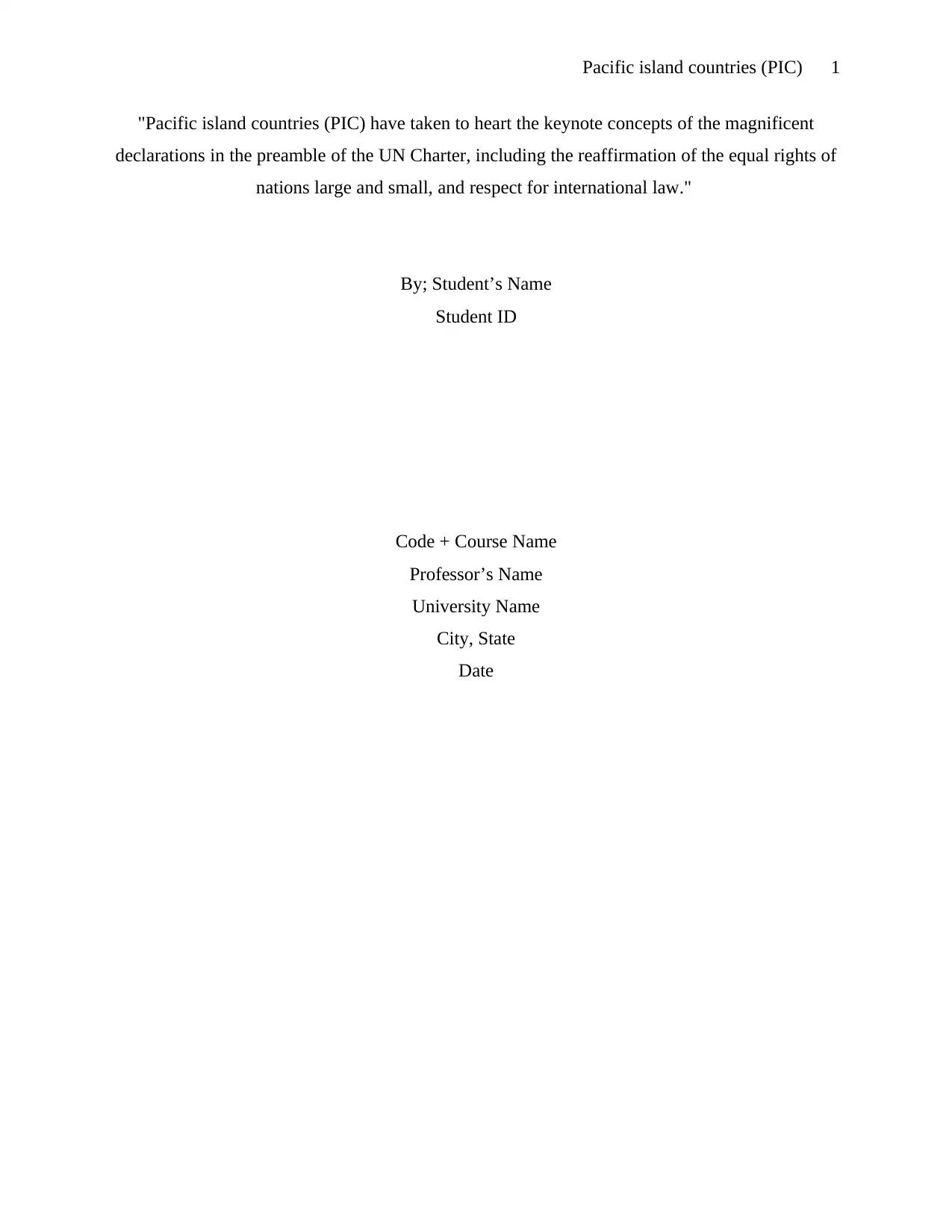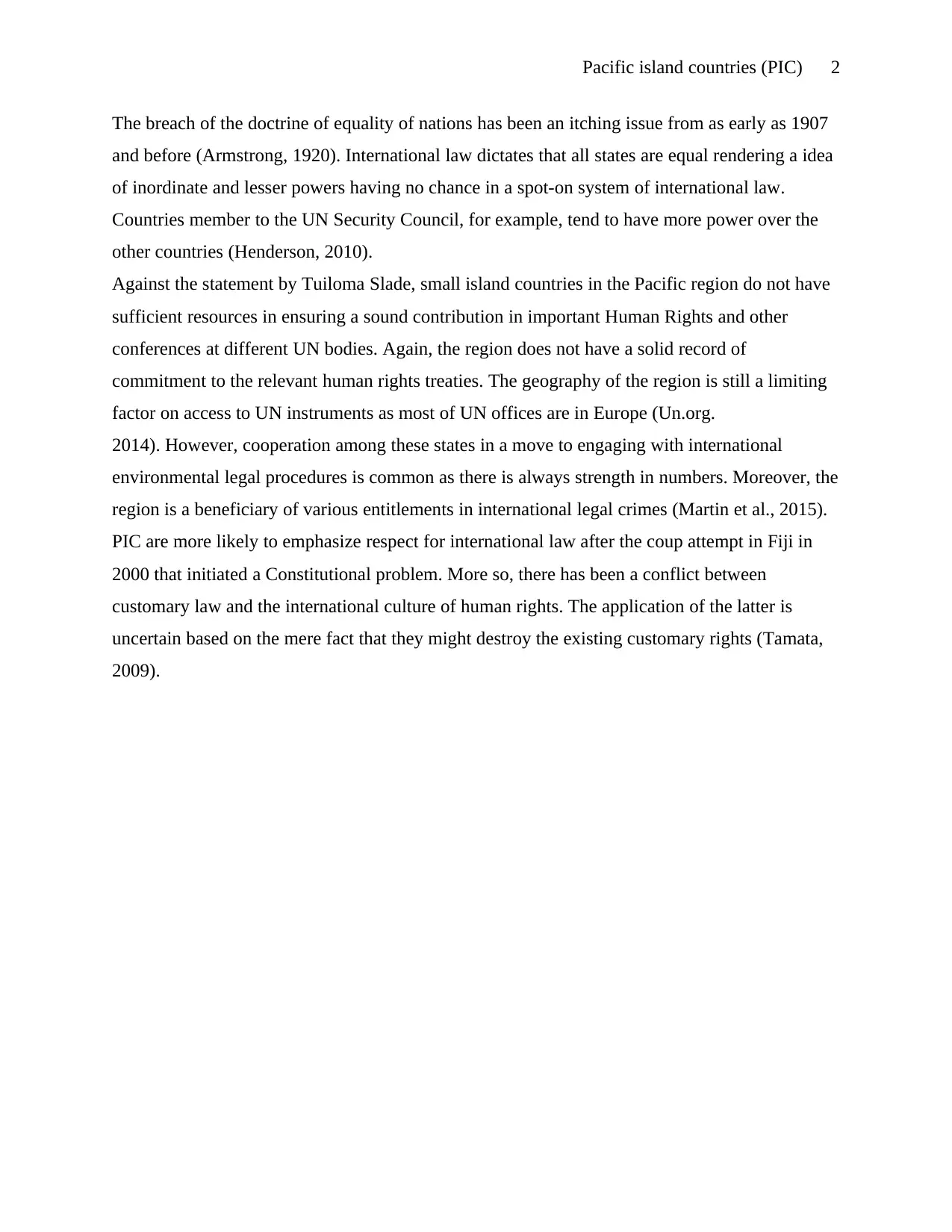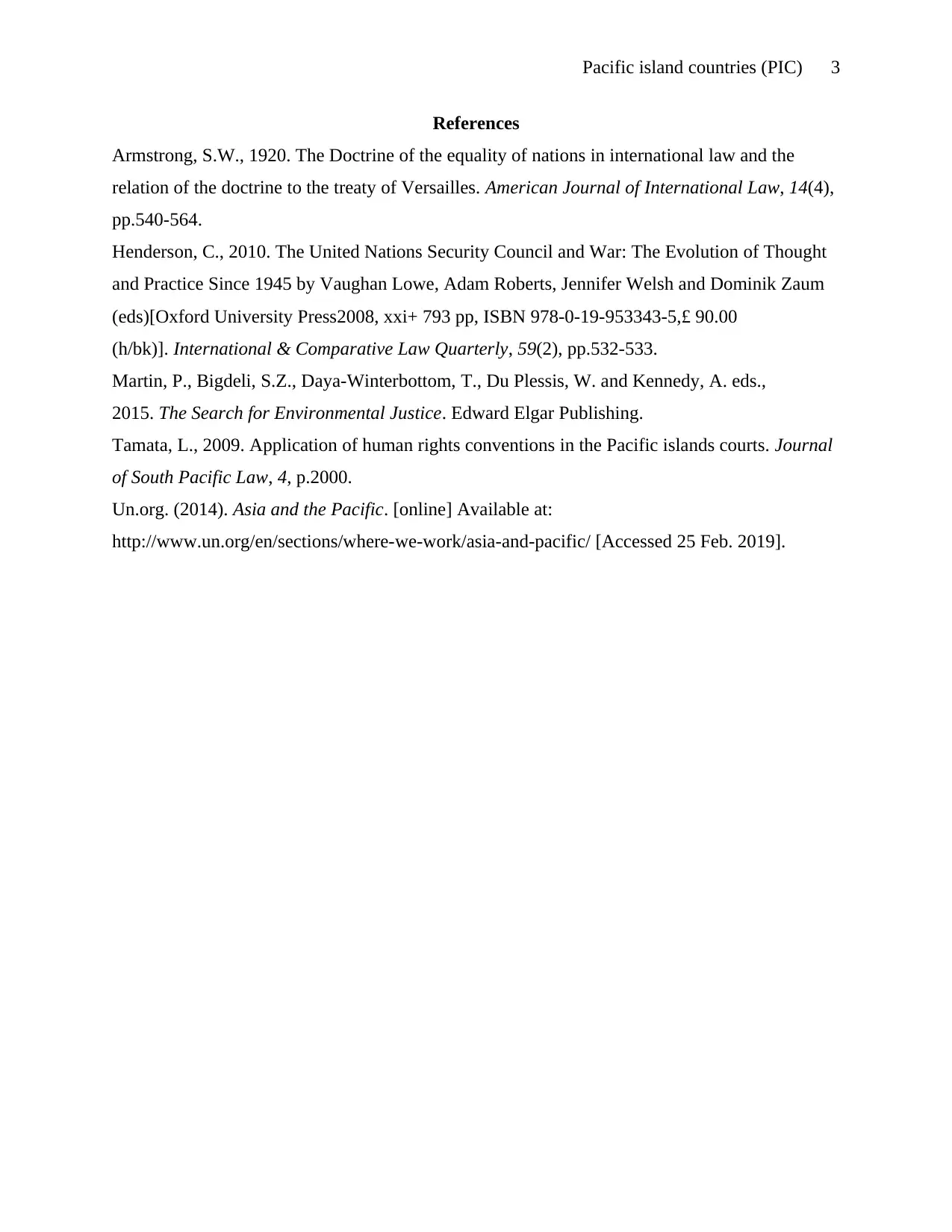The Intersection of International Law and Pacific Island Nations
VerifiedAdded on 2023/04/23
|3
|570
|242
Essay
AI Summary
This essay examines the engagement of Pacific Island Countries (PIC) with international law, particularly in the context of the UN Charter and the principle of equal rights for nations. It acknowledges Tuiloma Slade's assertion about PIC's commitment to international law but also points out the challenges these nations face due to limited resources, geographical constraints, and inconsistent adherence to human rights treaties. The essay highlights the cooperative efforts of PIC in international environmental law and their emphasis on respecting international law following the Fiji coup in 2000. Furthermore, it addresses the conflict between customary law and international human rights culture, noting the uncertainty in applying the latter without undermining existing customary rights. The references provided offer a comprehensive overview of the legal and political landscape surrounding PIC and their interaction with the international legal system.
1 out of 3




![[object Object]](/_next/static/media/star-bottom.7253800d.svg)